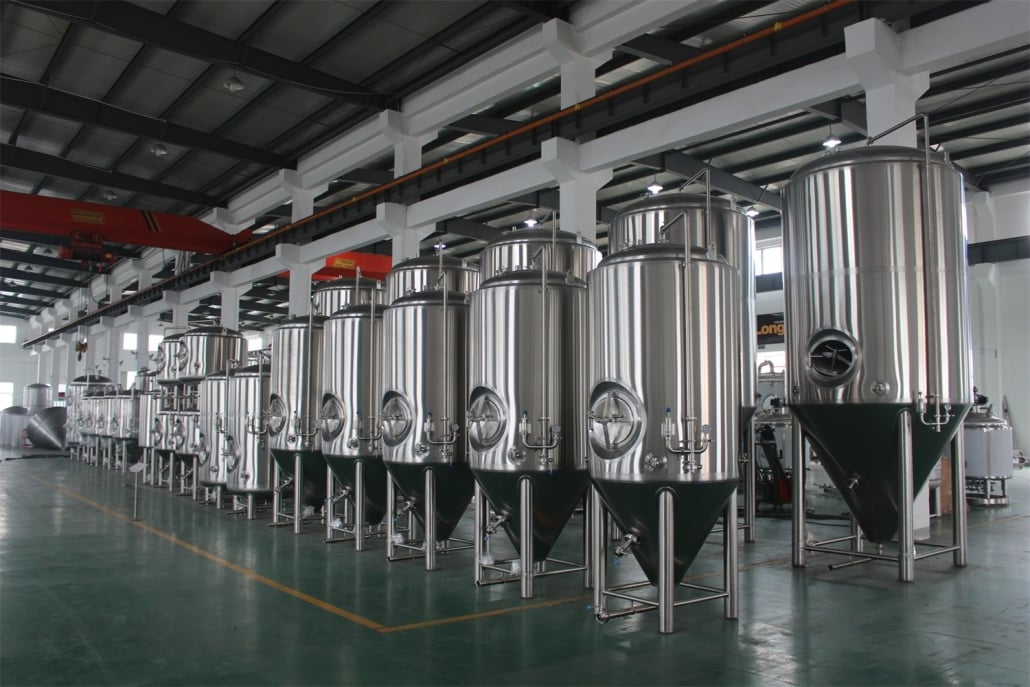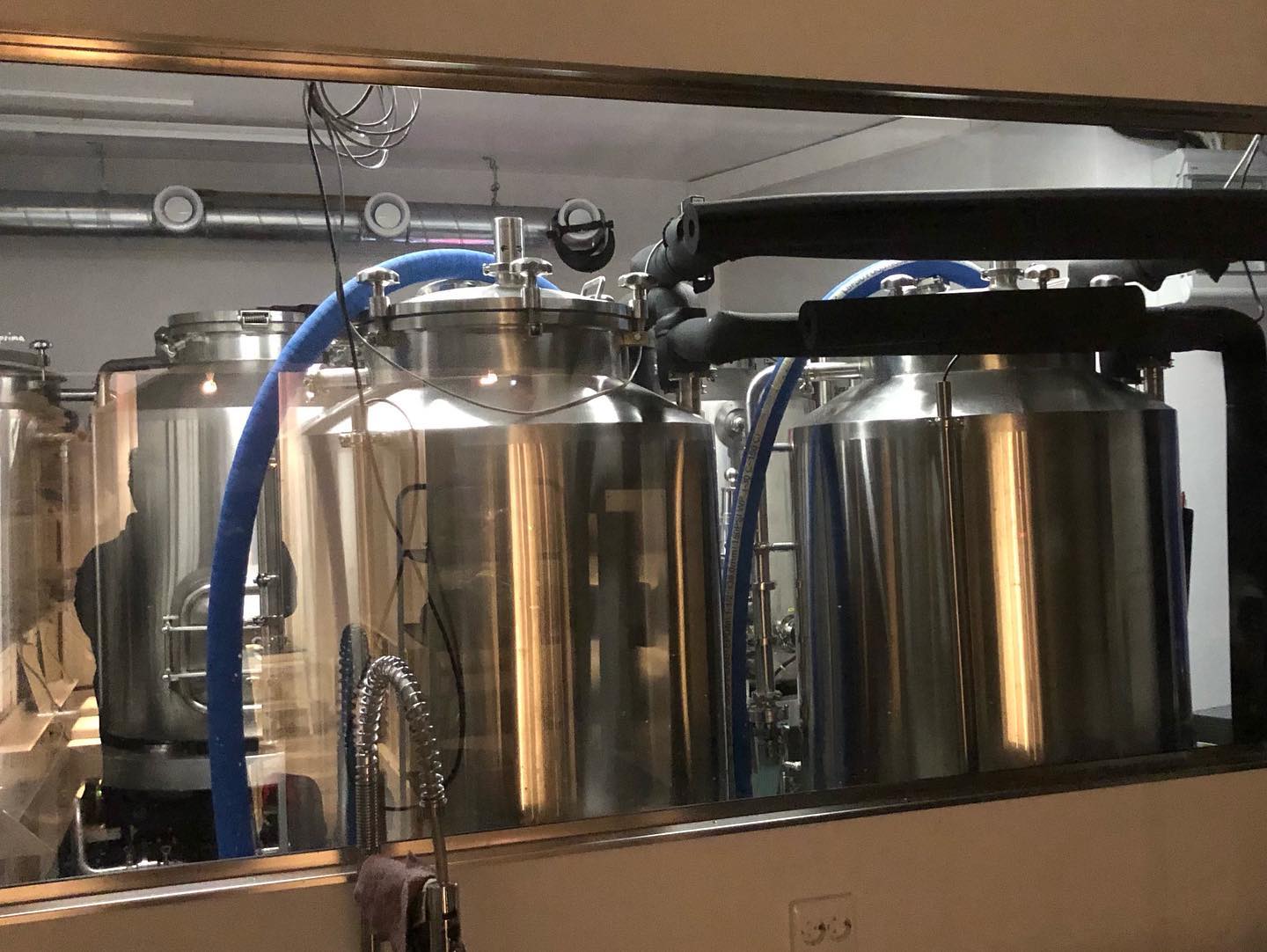Mastering the Art of Brewing with Commercial Brewing Equipment
Introduction
When it comes to the art and science of beer-making, having the right equipment can make all the difference between a mediocre brew and an exceptional one. For breweries and microbreweries, investing in high-quality commercial brewing equipment is not just a luxury but a crucial step towards success. In this comprehensive guide, we will delve into the world of commercial brewing equipment, exploring its types, importance, selection criteria, setup process, maintenance, and much more.
What is Commercial Brewing Equipment?
Commercial brewing equipment refers to the specialized machinery and tools used in large-scale beer production. These are heavy-duty, precision-crafted systems designed to handle significant volumes of brewing, ensuring consistency, efficiency, and quality throughout the process. Commercial breweries rely on these equipment setups to produce their flagship beers and meet the demands of their ever-growing customer base.
The Importance of High-Quality Brewing Equipment
In the brewing industry, the quality of equipment directly impacts the quality of the beer produced. High-quality brewing equipment ensures that the brewing process is precise, allowing brewers to have better control over factors like temperature, fermentation, and maturation. The result is a brew that is not only delicious but also consistent from batch to batch, earning the loyalty of customers.

Types of Commercial Brewing Equipment
Brewing Kettles
At the heart of any brewery lies the brewing kettle, where water, malt, hops, and other ingredients come together to create the wort. Brewing kettles come in various sizes and configurations, and their design often influences the beer’s flavor and characteristics.
Fermentation Tanks
Fermentation tanks play a crucial role in the beer-making process, as this is where yeast converts sugars into alcohol and carbon dioxide. These tanks come in various shapes and sizes and are designed to ensure optimal yeast activity and beer maturation.
Mash Tuns
Mash tuns are vessels used during mashing, a process where hot water is mixed with crushed malt to extract fermentable sugars. These tuns facilitate the conversion of starches into sugars, a vital step in brewing.
Wort Chillers
After boiling, the hot wort needs to be rapidly cooled down to a temperature suitable for fermentation. Wort chillers are responsible for this crucial task, ensuring that the wort is cooled quickly to avoid the risk of contamination.
Filtration Systems
Filtration is a critical step that removes unwanted solids and particles from the beer, ensuring clarity and stability. Filtration systems can vary in complexity, from basic filters to advanced membrane-based setups.
Cleaning and Sanitizing Equipment
Maintaining a hygienic brewing environment is paramount in producing safe and high-quality beer. Cleaning and sanitizing equipment are used to ensure that all brewing vessels and components are free from contaminants.
Bottling and Canning Lines
Once the beer is ready, bottling and canning lines take over to package the brew for distribution and sale. These automated systems streamline the packaging process, reducing manual labor and ensuring consistent packaging.
Automated Brewing Systems
As technology advances, more breweries are embracing automation to improve efficiency and consistency in their brewing process. Automated brewing systems utilize digital controls and sensors to optimize various brewing stages.
Factors to Consider When Choosing Commercial Brewing Equipment
Production Capacity
The production capacity of the equipment should align with the brewery’s planned output. It’s essential to choose equipment that can handle current production needs while allowing room for growth.
Quality and Durability
Investing in high-quality and durable equipment ensures longevity and reduces the risk of breakdowns during critical brewing stages.
Customizability and Flexibility
Breweries often have unique recipes and brewing methods. Look for equipment that can be customized to accommodate specific requirements.
Energy Efficiency
Energy costs can significantly impact a brewery’s bottom line. Opt for energy-efficient equipment to reduce operating expenses.
Budget and Cost of Ownership
Consider the initial investment and the total cost of ownership, including maintenance and potential upgrades, before making a decision.
After-Sales Support and Warranty
Reliable after-sales support and warranty coverage are crucial to address any technical issues promptly and efficiently.
How to Set Up a Brewery with Commercial Brewing Equipment
Planning and Research
Thorough planning and research are essential before setting up a brewery. Consider market demand, competition, and target audience.
Location and Space Requirements
Select a suitable location that complies with zoning laws and offers enough space to accommodate the brewing equipment and future expansions.
Licensing and Legal Considerations
Obtain all necessary licenses and permits to operate a brewery legally.
Equipment Selection and Layout
Work with brewing equipment suppliers to choose the best setup for your brewery’s needs and optimize the layout for efficiency.
Installation and Setup
Ensure proper installation of equipment and follow manufacturer guidelines to set up the brewing system correctly. This step may involve hiring professional installers or working closely with the equipment supplier.
Staff Training and Safety Measures
Train your brewery staff on how to operate and maintain the brewing equipment safely and efficiently. Emphasize safety protocols to prevent accidents and ensure a smooth workflow.
Maintenance and Care for Commercial Brewing Equipment
Regular Cleaning and Sanitization
Regular cleaning and sanitization are crucial to maintain the hygiene and quality of the brewing equipment. Develop a cleaning schedule and follow industry best practices to prevent contamination.
Preventive Maintenance
Implement a preventive maintenance plan to detect and address potential issues before they escalate. Regularly inspect equipment, replace worn-out parts, and lubricate moving components.
Troubleshooting and Repairs
Train staff on troubleshooting common issues with the brewing equipment. Establish a relationship with reliable equipment repair services to address any complex problems promptly.
Upgrades and Enhancements
Keep an eye on advancements in brewing technology and consider upgrading equipment to improve efficiency and quality. Upgrades can also help meet changing consumer demands.
Brewing Process with Commercial Equipment
Mashing
During mashing, hot water is mixed with crushed malt to activate enzymes that convert starches into fermentable sugars. Proper mashing is crucial for creating the desired flavor and alcohol content.
Lautering
Lautering involves separating the liquid wort from the spent grains after mashing. The wort is collected and ready for boiling, while the spent grains are typically used as animal feed or for other purposes.
Boiling
Boiling the wort is where hops are added for bitterness, flavor, and aroma. The boiling process also sterilizes the wort and further enhances its taste profile.
Fermentation
Fermentation takes place in fermentation tanks, where yeast consumes sugars and converts them into alcohol and carbon dioxide. The temperature and time of fermentation influence the beer’s flavor and aroma.
Filtration and Packaging
After fermentation, the beer goes through filtration to remove any remaining solids. It is then packaged into bottles, cans, or kegs for distribution and sale.

Trends in Commercial Brewing Equipment
Sustainability and Eco-Friendly Practices
As consumers increasingly value sustainability, breweries are adopting eco-friendly practices. This includes energy-efficient equipment, water recycling, and responsible waste management.
Automation and Smart Brewing Technology
Advancements in automation and smart technology are revolutionizing the brewing industry. Automated brewing systems allow brewers to control and monitor the process remotely, improving efficiency and consistency.
Craft and Microbrewery Equipment
The rise of craft breweries and microbreweries has led to the demand for smaller-scale brewing equipment. Craft-specific equipment caters to artisanal brewing methods and niche flavors.
Remote Monitoring and Control
Remote monitoring systems enable brewers to keep track of equipment performance and data from any location, ensuring proactive maintenance and timely adjustments.
Advantages and Challenges of Using Commercial Brewing Equipment
Advantages
- Consistency: Commercial brewing equipment ensures consistent quality across batches.
- Efficiency: Large-scale brewing equipment increases production efficiency.
- Productivity: Faster brewing processes result in higher output.
- Precision: Fine control over brewing variables leads to better beer profiles.
Challenges
- Initial Investment: High-quality equipment can have a significant upfront cost.
- Space and Logistics: Setting up a brewery requires sufficient space and careful planning.
- Maintenance Costs: Regular maintenance and repairs are necessary to keep equipment running smoothly.
- Competition: The brewing industry is competitive, and breweries must stand out to succeed.
Conclusion
Commercial brewing equipment is the backbone of a successful brewery. By investing in top-quality equipment and following best practices for setup, operation, and maintenance, breweries can consistently produce high-quality beer that delights customers. Additionally, staying abreast of industry trends and embracing innovations can set a brewery apart in a competitive market.
FAQs
- Is commercial brewing equipment only for large breweries? No, commercial brewing equipment is available in various sizes to cater to different brewery scales, including microbreweries and craft breweries.
- Can I customize commercial brewing equipment to suit my recipes? Yes, many equipment manufacturers offer customizable options to accommodate unique brewing requirements.
- Are automated brewing systems user-friendly? Yes, modern automated systems are designed for ease of use and come with user-friendly interfaces.
- How often should I clean and sanitize brewing equipment? Regular cleaning and sanitization should be done after each batch and as part of a scheduled maintenance routine.
- What are some sustainable practices in commercial brewing? Sustainable practices include energy-efficient equipment, water conservation, and responsible waste management.
Share this entry
Interested in learning more about Brewing Systems including additional details and pricing information? Please use the form below to contact us!
YOLONG BREWERY EQUIPMENT FAQS
- Commercial Brewery / Craft Brewery / Microbrewery / Nanobrewery
- What is The Difference Between Craft Beer and Industrial Beer?
- The Bespoke Differences In Custom Brewing Systems
- Everything You Need to Know About Kettle Souring
- How to Choose Brewing Equipment for Your business?
- How To Choose The-Best Partner To Build Your Commercial Microbrewing System?
- Two Detection Sensors That You Need To Use In Your Brewhouse System
- Remote Control Applications in Brewing Equipment/How does it work?
- How To Clean Your Brand New Brewery Tanks?

